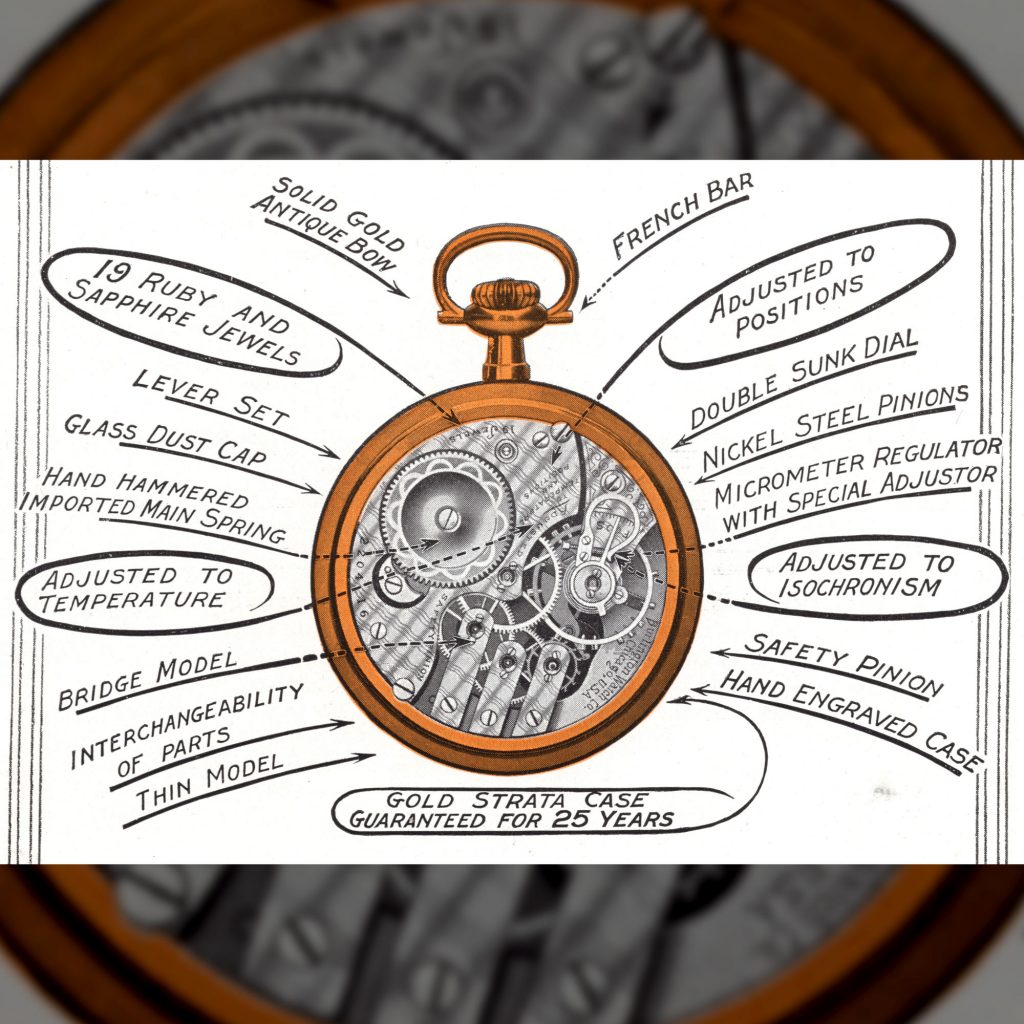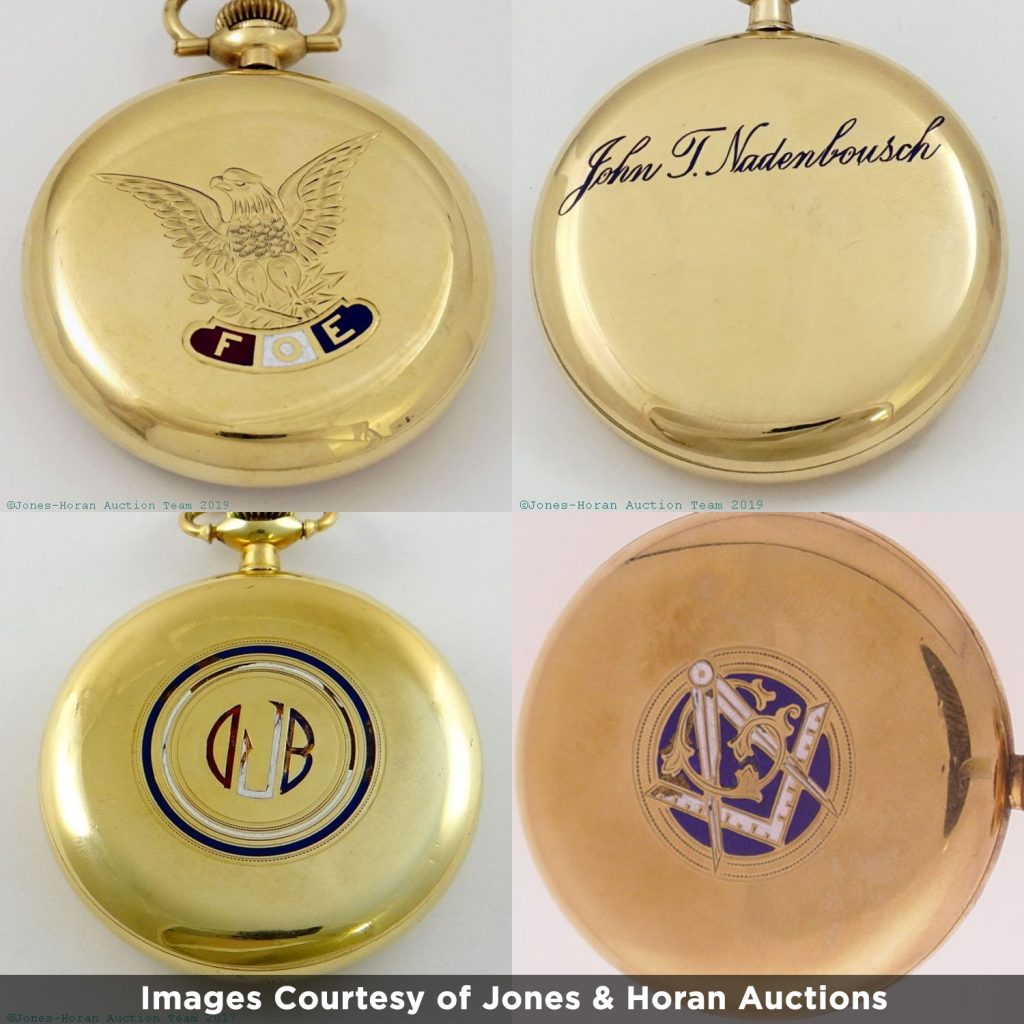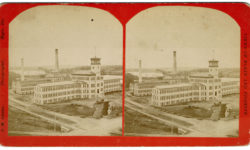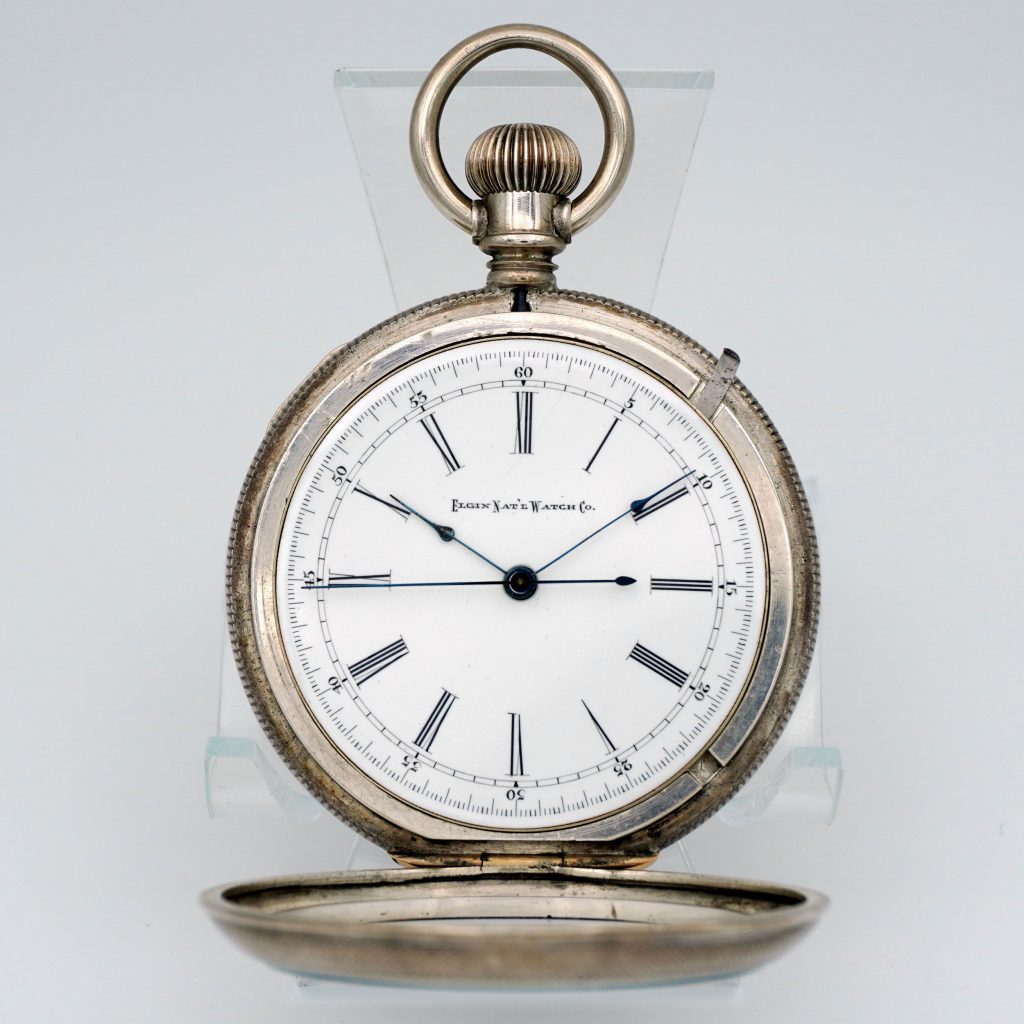Private Label Trade Names on American Pocket Watches: “Burlington Watch Co.” Part 12: Adjusted to Isochronism

The second-generation “Burlington Special,” based on the 16-Size Illinois Grade 185, was the first Burlington watch described as “Adjusted to Isochronism.”
Isochronometric adjustments improve the timekeeping properties of the watch, yielding a uniform rate while the power in the mainspring is gradually reduced.
During this era, watches claiming a “fully adjusted” status were assumed to be adjusted to temperature, positions, and isochronism. It is unclear whether the adjusted variant of the first-generation Grade 174 “Burlington Special” was adjusted to isochronism since original advertisements do not mention isochronism.
The c.1911 Burlington Watch Company catalog includes a beautiful diagram of the Grade 185 movement, noting the key features of the watch. The adjustments are clearly indicated as “Adjusted to Temperature,” “Adjusted to Isochronism,” and “Adjusted to Positions.” This is consistent with the standard Illinois Grade 185 – adjusted to temperature, isochronism, and three positions.
The catalog provides a summary of the isochronometric adjustment:
“Adjusted to Isochronism. This process of adjusting consists in a careful adjustment between balance wheel and hair spring and adjusting and whetting the sapphire pilot jewels so that the speed of a watch when it is fully wound up is just the same as when it is almost run down. While the adjustment to temperature is found on only a small percentage of all watches, the isochronometric adjustment is confined to a still smaller percentage of watches – not more than four watches out of every one hundred watches made in the United States have this adjustment. The watch is not marked for this adjustment. The marking “adjusted to positions” includes isochronometric adjustment as explained on page 20.”c.1911 Burlington Watch Company Catalog



